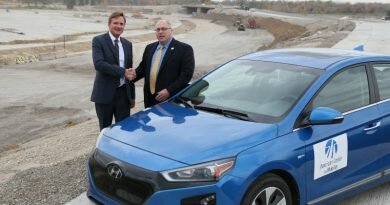AT&T, Ford, Nokia and Qualcomm launch cellular-V2X connected car technology trials
AT&T, Ford, Nokia, and Qualcomm Technologies are helping to accelerate the development of connected cars with the first announced Cellular-V2X (C-V2X) trials in the US. Testing is expected to take place in the San Diego Regional Proving Ground with the support of the San Diego Association of Governments (SANDAG), Caltrans, the City of Chula Vista, and intelligent transportation solutions (ITS) provider McCain. The goal of the trials is to demonstrate the potential of C-V2X technologies, including support for improved automotive safety, automated driving, and traffic efficiency. The trials will also be aimed at demonstrating to automakers and road operators the anticipated cost-efficient benefits associated with embedded cellular technology in vehicles and synergies between the deployment of cellular base stations and roadside infrastructure. The initial testing phase is expected to begin later this year.
Defined by 3rd Generation Partnership Project (3GPP) in 2017 as an extension of global cellular standards, C-V2X is an important factor in next-generation wireless technology for safety conscious and automated driving solutions. As wireless technology becomes prevalent, vehicles are using the cellular network for various tasks, ranging from emergency calls and over-the-air (OTA) updates, to diagnostics and real-time traffic updates. Using direct communication mode, C-V2X is designed to help expand the role of wireless technology for road safety applications by facilitating the ability of vehicles to directly communicate with other vehicles, pedestrian devices, and roadside infrastructure, such as traffic signs and construction zones, using the 5.9 GHz band without the involvement of a cellular network, or cellular network subscription. Complementary to other Advanced Driver Assistance Systems (ADAS) sensors, such as cameras, radar, and LIDAR, C-V2X technology is designed to support 360-degree non-line-of-sight (NLOS) awareness, and is designed to extend a vehicle’s ability to see, hear, and understand the environment down the road, at blind intersections, or in bad weather conditions.
For this trial, C-V2X platforms are expected to be installed in Ford vehicles using the Qualcomm 9150 C-V2X solution to facilitate direct communications, and are complemented by AT&T’s 4G LTE network communications and ITS platform that takes advantage of wireless base stations and multi-access edge computing technology from Nokia. For the new communication technologies being deployed, McCain will help facilitate the effective integration with existing and emerging traffic signal control infrastructure.
Testing will support direct C-V2X communications operating in the 5.9 GHz ITS spectrum to explore the safety enhancements of vehicle-to-vehicle (V2V) use cases, including do not pass warning, intersection movement assist, and left turn assist, to name a few. The trials will also support advanced vehicle communication capabilities for improved traffic efficiencies, such as real-time mapping updates and event notifications relayed using AT&T’s cellular network and Nokia Cloud Infrastructure.
With decades-long experience in automated vehicle testing, advanced features in regional transportation networks, and a global reputation as a high-tech hub for research and wireless innovation, the San Diego region was designated by the US Department of Transportation as one of ten automated vehicle proving grounds in the US earlier this year.










